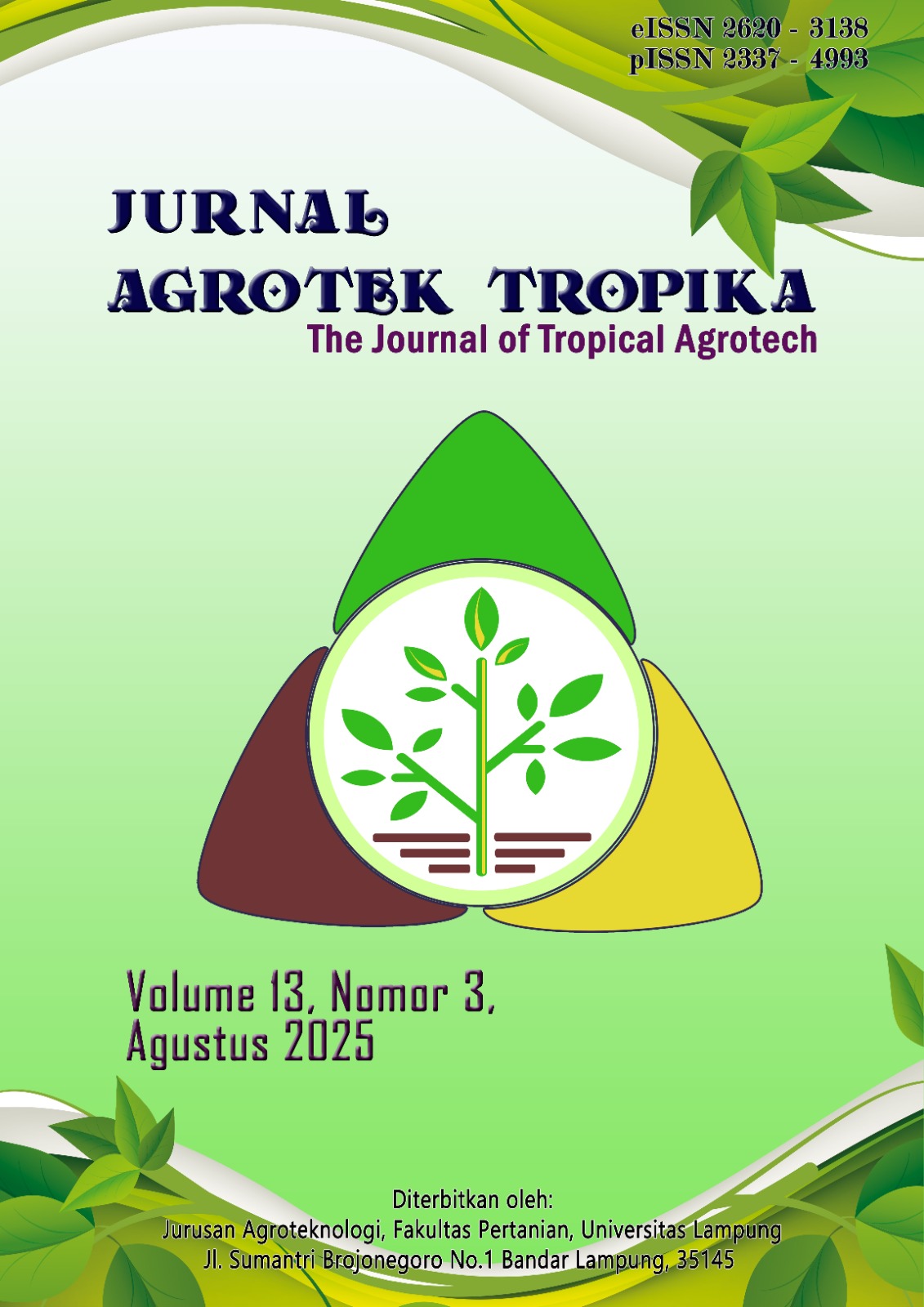EFFICACY OF GLYPHOSATE ISOPROPYLAMINE HERBICIDE 525 G/L ON WEED CONTROL IN IMMATURE OIL PALM PLANTATIONS
DOI:
https://doi.org/10.23960/jat.v13i3.11402 Abstract View: 5
Abstract View: 5
Abstract
The presence of weeds in immature oil palm plantations needs to be controlled, otherwise it results in competition with the main crop. Herbicide active ingredients, especially glyphosate, are widely used to reduce weed growth in oil palm plantations.. This study aimed to determine the dose of isopropylamine glyphosate herbicide that effectively controls weeds in oil palm plantations, changes in weed composition, and phytotoxicity due to the application of isopropylamine glyphosate herbicide in immature oil palm plantations. This trial was conducted in Oil Palm Plantation, Karang Anyar Village, Jati Agung District, South Lampung Regency and Weed Laboratory, Faculty of Agriculture, University of Lampung, September - December 2022. The trial was conducted using a randomized block design (RBD) with 4 replications and 6 treatments, namely several dose levels of isopropylamine glyphosate herbicide (787,5; 1.050; 1.312,5; and 1.575 g ha-1), mechanical weeding, and untreatment. Homogeneity of data variance was tested with Bartlett's test, additivity of data was tested with Tukey's test, and differences in treatment mean values were tested with the Least Significant Difference (LSD) test at the 5% level.The trial showed that isopropylamine glyphosate herbicide doses of 787,5 - 1.575 g ha-1 effectively controlled total weeds, grasses (Axonopus compressus and Ottochloa nodosa), and sedge (Cyperus kyllingia), as well as broad leaves (Asystasia gangetica and Melastoma affine) at dose levels of 1.312,5 and 1.575 g ha-1 at (4, 8, and 12) week after application, isopropylamine glyphosate herbicide doses of 787,5 - 1.575 g ha-1 caused changes in weed composition, and did not cause poisoning of immature oil palm plants after being applied to the crop disk until 12 week after application.
Downloads
Published
How to Cite
Issue
Section
License
Copyright (c) 2025 Adis Hirda Hirda, Herry Susanto, Sugiatno, Hidayat Pujisiswanto

This work is licensed under a Creative Commons Attribution 4.0 International License.
Jurnal Agrotek Tropika (JAT) is licensed under a Creative Commons Attribution 4.0 International License.
The copyright holder is the author. Authors publishing under any license allowed by the journal retain the copyright and full publishing rights without restrictions.
The Creative Commons Attribution 4.0 International (CC BY 4.0) license allows users to copy, distribute, and adapt the work, even for commercial purposes, as long as proper attribution is given to the original creator. This is a highly flexible license that encourages widespread dissemination and use of creative works, supporting innovation and collaboration across various fields.











